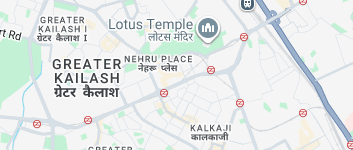Management of hazardous waste is a major issue in environmental conservation since toxic waste production in many developed countries impacts on human life and the environment. The Hazardous Waste and Other Wastes (Management and Transboundary Movement) Rules, 2016 better known as HWM Rules are the major law that governs the management of hazardous waste in India. These rules were set to properly handle, store, treat, and dispose of hazardous waste, which if improperly dealt with has a potential of affecting the health of humans and the environment negatively. The guidelines that are involved in the HWM Rules include addressing systems and regulatory approaches and measures concerning the limitation of the generation of hazardous waste, adoption of ESR technologies, and the recycling and recovery of valuable products from hazardous waste. In this technique, these rules aim at reducing the impact of hazardous wastes which includes soil and water pollution; air pollution and health hazards to persons living near disposer centers, waste generators and transporters. Further, the HWM Rules help in the proper export/import of hazardous wastes across the borders to abide by the rules and regulation of the international treaties regarding the optimum use and ethically correct disposal of such wastes.
Table Of Content
What is Hazardous Waste Management?
Hazardous waste management is a logical process of collection, transportation, treatment, and disposal of waste material that has hazards which may include toxicity, flammability, corrosivity, or reactivity. It starts with the definition and categorization of the dangerous wastes produced by several industries, research centers, or other producers. After that, such wastes are picked and put in specific vessels to help avoid chances of a leak or spillage. Transportation of hazardous waste is a sensitive issue that has to be conducted with the least level of risk possible hence the need to obey set rules and regulation. Some of the processes which are used are physic chemical or biological treats; these are used to minimize the effect of the waste. Subsequent to treatment, such waste is either properly dumped through landfilling, incineration, and deep well injection or again used to get useful materials through recycling processes. Legal compliance makes sure that the management of hazardous waste is done in a safe and responsible manner as provided by the law. The major purpose is to conserve human life and environmental quality from possible pollution and the adverse conditions related to potential dangerous substances. Good hazardous waste management goes beyond legal compliance as it can establish sustainable practices that minimize the effects of industrial processes to the environment.
Rules of Hazardous Waste Management
Key Provisions of the HWM Rules
The HWM Rules encompass several critical provisions aimed at regulating hazardous waste management:
- Responsibilities of Waste Generators: They detail how hazardous waste generators (occupiers) should prevent generation and disposal of the waste. This entails record keeping as well as the application and acquisition of permits regarding the management of wastes.
- Treatment and Disposal Facilities: The rules require that treatment, storage and disposal facilities (TSDFs) that are friendly to the environment be made. These are necessary for management to be involved in safe handling of the hazardous waste.
- Transboundary Movement: Export and import of hazardous waste is also dealt with by HWM Rules to make sure that it is not in contravention of the international laws and the particular care that is taken under the Basel Convention.
Amendments and Updates on Hazardous Waste Management Rules
Implementations were made on Hazardous and Other Wastes (Management and Transboundary Movement) Rules 2016 and some changes have been made afterwards to enhance the compliance regarding the management of hazardous equipment in India. These amendments address the new requirements of fields and the responses of other participants in the market by making the system more effective and efficient. Prominent changes include those made in 2017, where provisions regarding other waste categories were included in the regulation, in 2018 where there were clarifications on definition and compliance of hazardous waste and in 2019 the Targets were made on simplification of the process to ease approval, reducing paper work amid transition to compliance and in 2021 more emphasis was placed on accountability of other wastes with enhancement of the environmentally sound management principles. The aforesaid amendments depict India’s willingness to accustom itself according to the dynamic risk requirements of the emerging hazardous waste management challenges.
Challenges in Hazardous Waste Management
Despite the comprehensive framework provided by the HWM Rules, significant challenges remain:
- Implementation Issues: Most sectors experience challenges in compliance because of the tough requirements of regulations and the cost of waste management. It often results in its disposal in the wrong methods and hence pollutes the environment.
- Lack of Infrastructure: Lack of proper treatment and disposal services remain a major challenge in the implementation of hazardous waste management. Due to the on-going process of urbanization in India, such sort of facilities are in demand, which means that there is a dire need to invest and develop such facilities.
- Training and Awareness: From the results obtained, it is evident that there is a need to improve the current training practices of employees dealing with hazardous waste. Due to the complexity of the hazardous materials transported and dealt with during disasters, there must be adequate training of employees for the task in compliance with the law..
Conclusion
Hazardous and Other Wastes (Management and Transboundary Movement) Rules, 2016 are an important instrument to control disposal of hazardous waste in India with focus on health and environmental effects. Thus, certain challenges remain even if current procedures have been amended in 2017, 2018, 2019, and 2021 to facilitate processes and improve compliance: it is possible to speak about implementation issues, as well as infrastructure and workforce training problems. These problems can only be solved by intensive cooperation of the government, industries and overall population. Thus, the constant development of legislation and improvement of the world’s experience and infrastructure can contribute to creating a safer attitude toward hazardous waste in India, safeguarding the environment and contributing to the sustainable development of the region for future generations.
Why Professional Utilities?
At Professional Utilities, we leverage our industry knowledge and expertise to help businesses navigate complex regulations, minimize risks, and optimize operations for maximum efficiency and profitability.

One Stop Corporate Solution

PAN India
Services

Free Expert
Assistance

Google Verified
Business

Dedicated Support
Staff

Money-Back
Guarantee
Frequently Asked Questions
Who is responsible for managing hazardous waste in India?
Hazardous waste is created as well as managed by several stakeholders namely: the waste makers (industries, laboratories, hospitals), transporters, and treatment facilities and the disposal units. The waste generators must reduce the amount of waste produced, store the wastes adequately, and adhere to the regulatory provisions on disposal of wastes. The state pollution control boards/committees SPCBs/PCCs are responsible for ensuring compliance, issuance of the authorization and implementing the rules.
How have the HWM Rules been updated since 2016?
Before the coming of the HWM Rules, the company has made changes in 2017, 2018, 2019, and 2021. It is important to realize here that these updates sought to improve the regulations and processes as well as compliance. For instance, the 2019 amendment was aimed at cutting down on paperwork, whereas the 2021 amendment concentrated on boosting responsibility and compliance with the principles of sustainable management of a sound environment.
Why were the Hazardous Waste Management Rules established?
These rules were set in order to serve the purpose of preserving the health of people as well as the environment from the risks emanating from hazardous waste. They control the handling, storage, treatment and disposal of such waste and hence prevents things like soil and water pollution, air pollution and health complications. They also seek to make a correlation between Indian and worldwide conventions regarding waste management and encourage recycling of scarce resources.
What types of waste are considered hazardous under these rules?
Hazardous waste comprises things that have toxic, flammable, corrosive or reactive characteristics. Some of these are industrial chemicals, solvents, batteries, electronic waste, medical waste, and some by-products of various industrious activities. This means that the rules contain certain specifications and a list of wastes that are considered hazardous according to certain guidelines, thus enabling the accredited identification and handling.

.svg)







